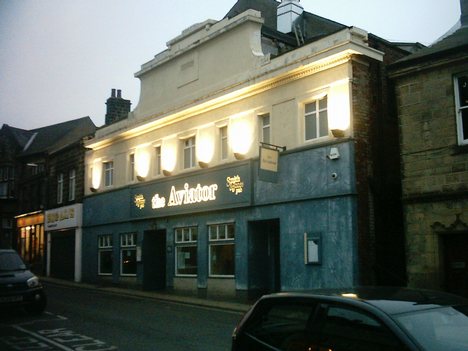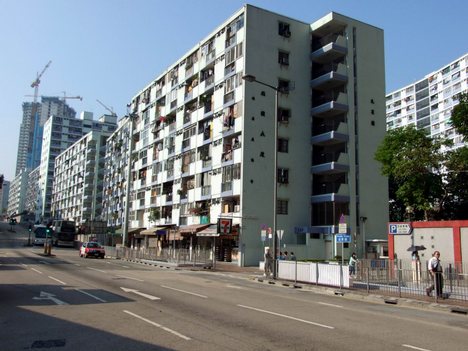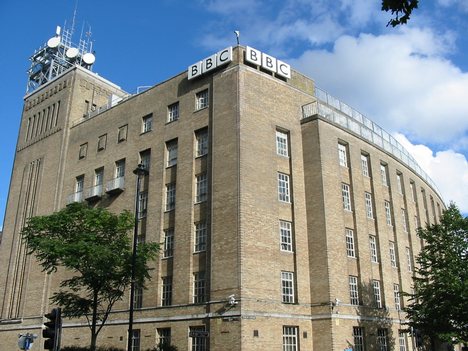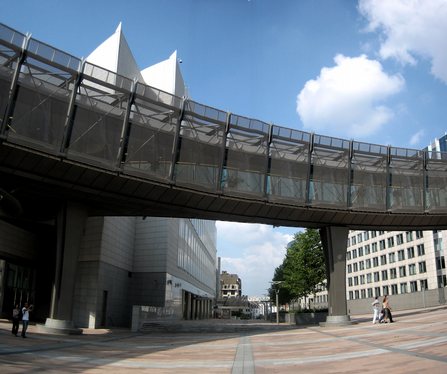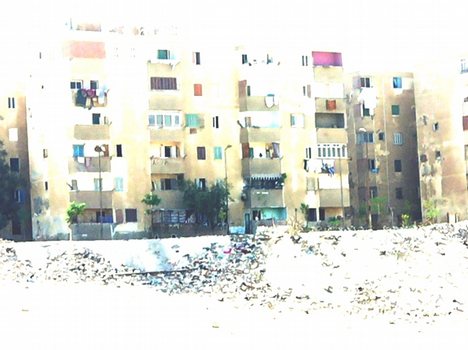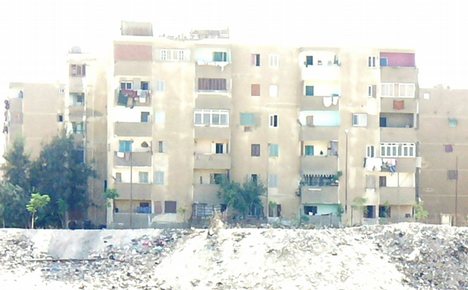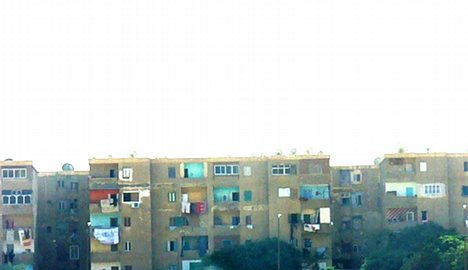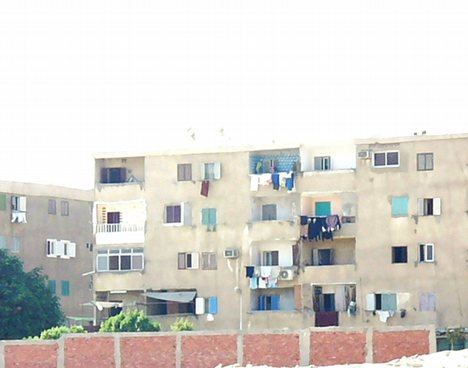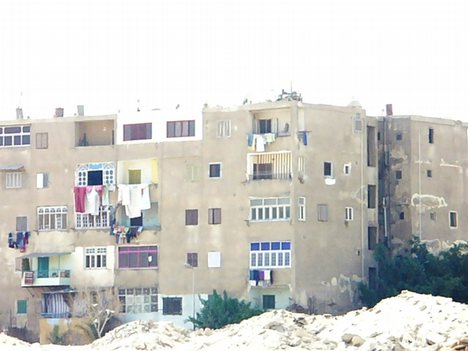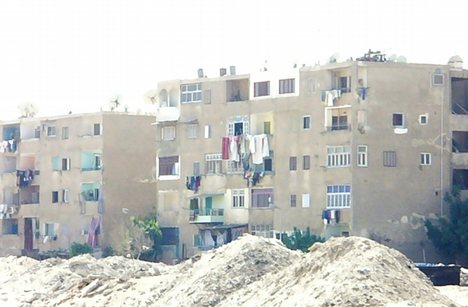
- Order:
- Duration: 5:33
- Published: 2010-01-20
- Uploaded: 2011-02-12
- Author: paparrano
A public house, informally known as a pub and sometimes referred to as the "local", is a drinking establishment which is part of British culture. There is no formal and generally accepted difference between pubs and bars, or other premises where alcohol is served commercially. A pub that offers lodging may be called an inn or (more recently) hotel in the United Kingdom. Today, many pubs in the UK, Canada and Australia with the word "inn" or "hotel" in their names no longer offer accommodation, and in some cases have never done so. Some pubs bear the name of "hotel" because they are in countries where stringent anti-drinking laws were once in force. In Scotland until 1976, only hotels could serve alcohol on Sundays. In Wales, an 1881 Act applied the same law until 1961 when local polls could lift such a ban in a district and in 1996 the last ban was lifted in Dwyfor. The need for such polls was removed by the Welsh Assembly in 2003.
There are approximately 53,500 public houses in the United Kingdom. In many places, especially in villages, a pub can be the focal point of the community, so there is concern that more pubs are closing down than new ones opening.
The history of pubs can be traced back to Roman taverns, In many places, especially in villages, a pub can be the focal point of the community. The writings of Samuel Pepys describe the pub as the heart of England.
Public houses are socially and culturally different from places such as cafés, bars, bierkellers and brewpubs.
Pubs are social places based on the sale and consumption of alcoholic beverages, and most public houses offer a range of beers, wines, spirits, alcopops and soft drinks. Many pubs are controlled by breweries, so beer is often better value than wines and spirits, while soft drinks can be almost as expensive. Beer served in a pub may be cask ale or keg beer. All pubs also have a range of non-alcoholic beverages available. Traditionally the windows of town pubs are of smoked or frosted glass so that the clientèle is obscured from the street. In the last twenty years in the UK and other countries there has been a move away from frosted glass towards clear glass, a trend that fits in with brighter interior décors.
The owner, tenant or manager (licensee) of a public house is known as the publican or landlord. Each pub generally has "locals" or regulars; people who drink there regularly. The pub that people visit most often is called their local. In many cases, this will be the pub nearest to their home, but some people choose their local for other reasons: proximity to work, a venue for their friends, the availability of a particular cask ale, non-smoking or formerly as a place to smoke freely, or maybe a darts team or pool table.
Until the 1970s most of the larger public houses also featured an off-sales counter or attached shop for the sales of beers, wines and spirits for home consumption. In the 1970s the newly built supermarkets and high street chain stores or off-licences undercut the pub prices to such a degree that within ten years all but a handful of pubs had closed their off-sale counters. A society with a particular interest in British beers, ales and the preservation of the integrity of the public house is Campaign for Real Ale, (CAMRA).
A traveller in the early Middle Ages could obtain overnight accommodation in monasteries, but later a demand for hostelries grew with the popularity of pilgrimages and travel. The Hostellers of London were granted guild status in 1446 and in 1514 the guild became the Worshipful Company of Innholders.
In Europe, it is the provision of accommodation, if anything, that now separates inns from taverns, alehouses and pubs. The latter tend to supply alcohol (and, in the UK, usually soft drinks and sometimes food), but less commonly accommodation. Inns tend to be grander and more long-lived establishments; historically they provided not only food and lodging, but also stabling and fodder for the traveller's horse(s) and fresh horses for the mail coach. Famous London examples of inns include the George and The Tabard. There is however no longer a formal distinction between an inn and other kinds of establishment. Many pubs use the name "inn", either because they are long established and may have been formerly coaching inns, or to summon up a particular kind of image, or in many cases simply as a pun on the word "in" such as "The Welcome Inn" the name of many pubs in Scotland.
The original functions of an inn are now usually split among separate establishments, such as hotels, lodges, and motels, all of which might provide the traditional functions of an inn but which focus more on lodging customers than on other services; public houses, which are primarily alcohol-serving establishments; and restaurants and taverns, which serve food and drink. (Hotels often contain restaurants and also often serve complimentary breakfast and meals, thus providing all of the functions of traditional inns.) In North America, the lodging aspect of the word "inn" lives on in hotel brand names like Holiday Inn, and in some state laws that refer to lodging operators as innkeepers.
The Inns of Court in London were originally ordinary inns where barristers met to do business, but have become institutions of the legal profession in England and Wales.
Traditional English ale was made solely from fermented malt. The practice of adding hops to produce beer was introduced from the Netherlands in the early 15th century. Alehouses would each brew their own distinctive ale, but independent breweries began to appear in the late 17th century. By the end of the century almost all beer was brewed by commercial breweries.
The 18th century saw a huge growth in the number of drinking establishments, primarily due to the introduction of gin. Gin was brought to England by the Dutch after the Glorious Revolution of 1688 and started to become very popular after the government created a market for grain that was unfit to be used in brewing by allowing unlicensed gin production, whilst imposing a heavy duty on all imported spirits. As thousands of gin-shops sprang up all over England, brewers fought back by increasing the number of alehouses. By 1740 the production of gin had increased to six times that of beer and because of its cheapness it became popular with the poor, leading to the so-called Gin Craze. Over half of the 15,000 drinking establishments in London were gin-shops.
The drunkenness and lawlessness created by gin was seen to lead to ruination and degradation of the working classes. The distinction was illustrated by William Hogarth in his engravings Beer Street and Gin Lane. The Gin Act (1736) imposed high taxes on retailers but led to riots in the streets. The prohibitive duty was gradually reduced and finally abolished in 1742. The 1751 Gin Act however was more successful. It forced distillers to sell only to licensed retailers and brought gin-shops under the jurisdiction of local magistrates.
By the early 19th century and encouraged by a lowering of duties on gin, the gin houses or "Gin Palaces" had spread from London to most major cities and towns in Britain, with most of the new establishments illegal and unlicensed. These bawdy, loud and unruly drinking dens so often described by Charles Dickens in his Sketches by Boz (published 1835–6) increasingly came to be held as unbridled cesspits of immorality or crime and the source of much ill-health and alcoholism among the working classes.
Under a banner of "reducing public drunkenness" the Beer Act of 1830 introduced a new lower tier of premises permitted to sell alcohol, the Beer Houses. At the time beer was viewed as harmless, nutritious and even healthy. Young children were often given what was described as small beer, which was brewed to have a low alcohol content, to drink, as the local water was often unsafe. Even the evangelical church and temperance movements of the day viewed the drinking of beer very much as a secondary evil and a normal accompaniment to a meal. The freely available beer was thus intended to wean the drinkers off the evils of gin, or so the thinking went.
Under the 1830 Act any householder who paid rates could apply, with a one-off payment of two guineas, to sell beer or cider in his home (usually the front parlour) and even brew his own on his premises. The permission did not extend to the sale of spirits and fortified wines and any beer house discovered selling those items was closed down and the owner heavily fined. Beer houses were not permitted to open on Sundays. The beer was usually served in jugs or dispensed directly from tapped wooden barrels lying on a table in the corner of the room. Often profits were so high the owners were able to buy the house next door to live in, turning every room in their former home into bars and lounges for customers.
In the first year, four hundred beer houses opened and within eight years there were 46,000 opened across the country, far outnumbering the combined total of long-established taverns, public houses, inns and hotels. Because it was so easy to obtain permission and the profits could be huge compared to the low cost of gaining permission, the number of beer houses was continuing to rise and in some towns nearly every other house in a street could be a beer house. Finally in 1869 the growth had to be checked by magisterial control and new licensing laws were introduced. Only then was the ease by which permission could be obtained reduced and the licensing laws which operate today formulated.
Although the new licensing laws prevented any new beer houses from being created, those already in existence were allowed to continue and many did not fully die out until nearly the end of the 19th century. A very small number remained into the 21st century. A vast majority of the beer houses applied for the new licences and became full public houses. These usually small establishments can still be identified in many towns, seemingly oddly located in the middle of otherwise terraced housing part way up a street, unlike purpose-built pubs that are usually found on corners or road junctions. Many of today's respected real ale micro-brewers in the UK started as home based Beer House brewers under the 1830 Act.
The beer houses also tended to avoid the traditional public house names like The Crown, The Red Lion, The Royal Oak etc. and, if they did not simply name their place Smith's Beer House, they would apply topical pub names in an effort to reflect the mood of the times.
The Wine and Beerhouse Act 1869 reintroduced the stricter controls of the previous century. The sale of beers, wines or spirits required a licence for the premises from the local magistrates. Further provisions regulated gaming, drunkenness, prostitution and undesirable conduct on licensed premises, enforceable by prosecution or more effectively by the landlord under threat of forfeiting his licence. Licences were only granted, transferred or renewed at special Licensing Sessions courts, and were limited to respectable individuals. Often these were ex-servicemen or ex-policemen; retiring to run a pub was popular amongst military officers at the end of their service. Licence conditions varied widely, according to local practice. They would specify permitted hours, which might require Sunday closing, or conversely permit all-night opening near a market. Typically they might require opening throughout the permitted hours, and the provision of food or lavatories. Once obtained, licences were jealously protected by the licensees (always persons expected to be generally present, not a remote owner or company), and even "Occasional Licences" to serve drinks at temporary premises such as fêtes would usually be granted only to existing licensees. Objections might be made by the police, rival landlords or anyone else on the grounds of infractions such as serving drunks, disorderly or dirty premises, or ignoring permitted hours.
Detailed records were kept on licensing, giving the Public House, its address, owner, licensee and misdemeanours of the licensees for periods often going back for hundreds of years. Many of these records survive and can be viewed, for example, at the London Metropolitan Archives centre.
These culminated in the Defence of the Realm Act of August 1914, which, along with the introduction of rationing and the censorship of the press for wartime purposes, also restricted the opening hours of public houses to 12noon–2.30pm and 6.30pm–9.30pm. Opening for the full licensed hours was compulsory, and closing time was equally firmly enforced by the police; a landlord might lose his licence for infractions. There was a special case established under the State Management Scheme where the brewery and licensed premises were bought and run by the state until 1973, most notably in the Carlisle District. During the 20th century elsewhere, both the licensing laws and enforcement were progressively relaxed, and there were differences between parishes; in the 1960s, at closing time in Kensington at 10.30 pm, drinkers would rush over the parish boundary to be in good time for "Last Orders" in Knightsbridge before 11 pm, a practice observed in many pubs adjoining licensing area boundaries. Some Scottish and Welsh parishes remained officially "dry" on Sundays (although often this merely required knocking at the back door of the pub). These restricted opening hours led to the tradition of lock-ins.
However, closing times were increasingly disregarded in the country pubs. In England and Wales by 2000 pubs could legally open from 11am (12 noon on Sundays) through to 11pm (10.30pm on Sundays). That year was also the first to allow continuous opening for 36 hours from 11am on New Year's Eve to 11pm on New Year's Day. In addition, many cities had by-laws to allow some pubs to extend opening hours to midnight or 1am, whilst nightclubs had long been granted late licences to serve alcohol into the morning. Pubs in the immediate vicinity of London's Smithfield market, Billingsgate fish market and Covent Garden fruit and flower market were permitted to stay open 24 hours a day since Victorian era times to provide a service to the shift working employees of the markets.
Scotland's and Northern Ireland's licensing laws have long been more flexible, allowing local authorities to set pub opening and closing times. In Scotland, this stemmed out of a late repeal of the wartime licensing laws, which stayed in force until 1976.
The Licensing Act 2003, which came into force on 24 November 2005, aimed to consolidate the many laws into a single act. This allowed pubs in England and Wales to apply to the local authority for the opening hours of their choice. Supporters at the time argued that it would end the concentration of violence around half past 11, when people had to leave the pub, making policing easier. In practice, alcohol-related hospital admissions rose following the change in the law, with alcohol involved in 207,800 admissions in 2006/7. Critics claimed that these laws would lead to '24-hour drinking'. By the time the law came into effect, 60,326 establishments had applied for longer hours and 1,121 had applied for a licence to sell alcohol 24 hours a day. However, nine months after the act, many pubs had not changed their hours, although there was a tendency for some to be open longer at the weekend but rarely beyond 1:00 am.
A few pubs have stage performances such as serious drama, stand-up comedy, musical bands or striptease; however juke boxes and other forms of pre-recorded music have otherwise replaced the musical tradition of a piano and singing.
Later, the public bars gradually improved until sometimes almost the only difference was in the prices, so that customers could choose between economy and exclusivity (or youth and age, or a jukebox or dartboard). During the blurring of the class divisions in the 1960s and 1970s, the distinction between the saloon and the public bar was often seen as archaic, and was frequently abolished, usually by the removal of the dividing wall or partition itself. While the names of saloon and public bar may still be seen on the doors of pubs, the prices (and often the standard of furnishings and decoration) are the same throughout the premises, and many pubs now comprise one large room. However, the modern importance of dining in pubs encourages some establishments to maintain distinct rooms or areas, especially where the building has the right characteristics for this. Yet, in a few pubs there still remain rooms or seats that, by local custom, "belong" to particular customers.
However there still remain a few, mainly city centre pubs, that retain a public bar mainly for working men that call in for a drink while still dressed in working clothes and dirty boots. They are now very much in a minority, but some landlords prefer to separate the manual workers from the better dressed businessmen or diners in the lounge or restaurant.
Isambard Kingdom Brunel, the British engineer and railway builder, introduced the idea of a circular bar into the Swindon station pub in order that customers were served quickly and didn’t delay his trains. These island bars became popular as they also allowed staff to serve customers in several different rooms surrounding the bar.
A growing trend in the late 20th century was for breweries to run their pubs directly, using managers rather than tenants. Most such breweries, such as the regional brewery Shepherd Neame in Kent and Young's in London, control hundreds of pubs in a particular region of the UK, whilst a few, such as Greene King, are spread nationally. The landlord of a tied pub may be an employee of the brewery—in which case he would be a manager of a managed house, or a self-employed tenant who has entered into a lease agreement with a brewery, a condition of which is the legal obligation (trade tie) only to purchase that brewery's beer. This tied agreement provides tenants with trade premises at a below market rent providing people with a low-cost entry into self-employment. The beer selection is mainly limited to beers brewed by that particular company. A Supply of Beer law, passed in 1989, was aimed at getting tied houses to offer at least one alternative beer, known as a guest beer, from another brewery. This law has now been repealed but while in force it dramatically altered the industry. Some pubs still offer a regularly-changing selection of guest beers.
The period since the 1980s saw many breweries absorbed by, or becoming by take-overs larger companies in the food, hotel or property sectors. The low returns of a pub-owning business led to many breweries selling their pub estates, especially those in cities, often to a new generation of small companies, many of which have now grown considerably and have a national presence. Other pub chains, such as All Bar One and Slug and Lettuce offer youth-oriented atmospheres, often in premises larger than traditional pubs.
Organisations such as Wetherspoons, Punch Taverns and O'Neill's, were formed in the UK since changes in legislation in the 1980s necessitated the break-up of many larger tied estates. A PubCo is a company involved in the retailing but not the manufacture of beverages, while a Pub chain may be run either by a PubCo or by a brewery.
Pubs within a chain will usually have items in common, such as fittings, promotions, ambience and range of food and drink on offer. A pub chain will position itself in the marketplace for a target audience. One company may run several pub chains aimed at different segments of the market. Pubs for use in a chain are bought and sold in large units, often from regional breweries which are then closed down. Newly acquired pubs are often renamed by the new owners, and many people resent the loss of traditional names, especially if their favourite regional beer disappears at the same time.
In more recent years, however, many country pubs have either closed down, or have been converted to establishments intent on providing seating facilities for the consumption of food, rather than a venue for members of the local community meeting and convivially drinking.
In Canada and some other locations the majority of theme pubs are referred to as bars, such as 'biker bar', 'sports bar', 'gay bar', 'strip bar', 'Irish bar' etc. Pubs centred on dance floors featuring DJs or, less often, live music, are usually referred to as 'dance clubs'.
In 1393 King Richard II compelled landlords to erect signs outside their premises. The legislation stated "Whosoever shall brew ale in the town with intention of selling it must hang out a sign, otherwise he shall forfeit his ale." This was in order to make alehouses easily visible to passing inspectors, borough ale tasters, who would decide the quality of the ale they provided. William Shakespeare's father, John Shakespeare was one such inspector.
Another important factor was that during the Middle Ages a large proportion of the population would have been illiterate and so pictures on a sign were more useful than words as a means of identifying a public house. For this reason there was often no reason to write the establishment's name on the sign and inns opened without a formal written name, the name being derived later from the illustration on the public house's sign.
The earliest signs were often not painted but consisted, for example, of paraphernalia connected with the brewing process such as bunches of hops or brewing implements, which were suspended above the door of the public house. In some cases local nicknames, farming terms and puns were also used. Local events were also often commemorated in pub signs. Simple natural or religious symbols such as 'The Sun', 'The Star' and 'The Cross' were also incorporated into pub signs, sometimes being adapted to incorporate elements of the heraldry (e.g. the coat of arms) of the local lords who owned the lands upon which the public house stood. Some pubs also have Latin inscriptions.
Other subjects that lent themselves to visual depiction included the name of battles (e.g. Trafalgar), explorers, local notables, discoveries, sporting heroes and members of the royal family. Some pub signs are in the form of a pictorial pun or rebus. For example, a pub in Crowborough, East Sussex called The Crow and Gate has an image of a crow with gates as wings.
A British Pathe News film of 1956 shows artist Michael Farrar-Bell at work producing inn signs.
Most British pubs still have decorated signs hanging over their doors, and these retain their original function of enabling the identification of the public house. Today's pub signs almost always bear the name of the pub, both in words and in pictorial representation. The more remote country pubs often have stand-alone signs directing potential customers to their door.
As many public houses are centuries old, many of their early customers were unable to read, and pictorial signs could be readily recognised when lettering and words could not be read.
Pubs often have traditional names. A common name is the "Marquis of Granby". These pubs were named after John Manners, Marquess of Granby, who was the son of John Manners, 3rd Duke of Rutland and a general in the 18th century British Army. He showed a great concern for the welfare of his men, and on their retirement, provided funds for many of them to establish taverns, which were subsequently named after him.
Many names for pubs that appear nonsensical may have come from corruptions of old slogans or phrases, such as "The Bag o'Nails" (Bacchanals), "The Cat and the Fiddle" (Caton Fidèle) and "The Bull and Bush", which purportedly celebrates the victory of Henry VIII at "Boulogne Bouche" or Boulogne-sur-Mer Harbour.
Increasingly, more modern games such as video games and slot machines are provided. Many pubs also hold special events, from tournaments of the aforementioned games to karaoke nights to pub quizzes. Some play pop music and hip-hop (dance bar), or show football and rugby union on big screen televisions (sports bar). Shove ha'penny and Bat and trap were also popular in pubs south of London.
Many pubs in the UK also have football teams composed of regular customers. Many of these teams are in leagues that play matches on Sundays, hence the term "Sunday League Football". Bowling is also found in association with pubs in some parts of the country and the local team will play matches against teams invited from elsewhere on the pub's bowling green.
Pubs may be venues for pub songs and live music. During the 1970s pubs provided an outlet for a number of bands, such as Kilburn and the High Roads, Dr. Feelgood and The Kursaal Flyers, who formed a musical genre called Pub rock that was a precursor to Punk music.
Since the 1990s food has become more important as part of a pub's trade, and today most pubs serve lunches and dinners at the table in addition to (or instead of) snacks consumed at the bar. They may have a separate dining room. Some pubs serve meals to a higher standard, to match good restaurant standards; these are sometimes termed gastropubs.
;Smallest Contenders for the smallest public house in the UK include
The list includes a small number of parlour pubs, one of which is the Sun Inn, in Herefordshire.
;Largest The largest public house in the UK is The Moon Under Water, Manchester; as with many Wetherspoons it is in a converted cinema.
;Oldest A number of pubs claim to be the oldest surviving establishment in the United Kingdom, although in several cases original buildings have been demolished and replaced on the same site. Others are ancient buildings that saw uses other than as a pub during their history. Ye Olde Fighting Cocks in St Albans, Hertfordshire, holds the Guinness World Record for the oldest pub in England, as it is an 11th century structure on an 8th century site. Ye Olde Trip To Jerusalem in Nottingham is claimed to be the "oldest inn in England". It has a claimed date of 1189, based on the fact it is constructed on the site of the Nottingham Castle brewhouse; the present building dates from around 1650. Likewise, The Nags Head, Burntwood only dates back to the 16th century, but there has been a pub on the site since at least 1086, as it is mentioned in the Domesday Book. There is archaeological evidence that parts of the foundations of 'The Old Ferryboat Inn', Holywell, Cambridgeshire, may date to AD 460, and there is evidence of ale being served as early as AD 560.
The Bingley Arms, Leeds, is claimed to date to 905 AD. Ye Olde Salutation Inn in Nottingham dates from 1240, although the building served as a tannery and a private residence before becoming an inn sometime before the English Civil War. The Adam and Eve in Norwich was first recorded in 1249, when it was an alehouse for the workers constructing nearby Norwich Cathedral. Ye Olde Man & Scythe in Bolton is mentioned by name in a charter of 1251, but the current building is dated 1631. Its cellars are the only surviving part of the older structure.
The highwayman Dick Turpin used the Swan Inn at Wroughton-on-the-Green in Buckinghamshire as his base. In the 1920s John Fothergill (1876-1957) was the innkeeper of the Spread Eagle in Thame, Berkshire, and published his autobiography: An Innkeeper's Diary (London: Chatto & Windus, 1931). During his idiosyncratic occupancy many famous people came to stay, such as H. G. Wells. United States president George W. Bush fulfilled his lifetime ambition of visiting a 'genuine British pub' during his November 2003 state visit to the UK when he had lunch and a pint of non-alcoholic lager with British Prime Minister Tony Blair at the Dun Cow pub in Sedgefield, County Durham.
;London Many of London's pubs are known to have been used by famous people, but in some cases, such as the association between Samuel Johnson and Ye Olde Cheshire Cheese, this is speculative, based on little more than the fact that the person is known to have lived nearby. However, Charles Dickens is known to have visited the Cheshire Cheese, the Prospect of Whitby, Ye Olde Cock Tavern and many others. Samuel Pepys is also associated with the Prospect of Whitby and the Cock Tavern.
The Fitzroy Tavern is a public house situated at 16 Charlotte Street in the Fitzrovia district, to which it gives its name. It became famous (or according to others, infamous) during a period spanning the 1920s to the mid 1950s as a meeting place for many of London's artists, intellectuals and bohemians such as Dylan Thomas, Augustus John, and George Orwell. Several establishments in Soho, London, have associations with well-known, post-war literary and artistic figures, including the Pillars of Hercules, The Colony Room and the Coach and Horses. The Canonbury Tavern, Canonbury, was the prototype for Orwell's ideal English pub, The Moon Under Water.
The Red Lion in Parliament Square is close to the Palace of Westminster and is consequently used by political journalists and Members of Parliament. The pub is equipped with a Division bell that summons MPs back to the chamber when they are required to take part in a vote. The Punch Bowl, Mayfair was at one time jointly owned by Madonna and Guy Ritchie and is known for the number of present-day celebrities that have patronised it. The Coleherne public house in Earls Court was a well-known gay pub from the 1950s. It attracted many well-known patrons, such as Freddie Mercury, Kenny Everett and Rudolph Nureyev. It was also used by the serial-killer Colin Ireland to pick-up victims.
In 1966 The Blind Beggar in Whitechapel became infamous as the scene of a murder committed by gangster Reggie Kray. The Ten Bells is associated with several of the victims of Jack the Ripper. In 1955, Ruth Ellis, the last woman executed in the United Kingdom, shot David Blakely as he emerged from The Magdala in South Hill Park, Hampstead, the bullet holes can still be seen in the walls outside. It is said that Vladimir Lenin and a young Joseph Stalin met in the Crown and Anchor pub (now known as The Crown Tavern) on Clerkenwell Green when the latter was visiting London in 1903.
The Angel, Islington was formerly a coaching inn, the first on the route northwards out of London, where Thomas Paine is believed to have written much of The Rights of Man. It was mentioned by Charles Dickens, became a Lyons Corner House, and is now a Co-operative Bank. It is also on the board in the British version of the board game Monopoly.
;Oxford and Cambridge The Eagle and Child and the Lamb and Flag, Oxford, were regular meeting places of the Inklings, a writers' group which included J. R. R. Tolkien and C. S. Lewis. The Eagle in Cambridge is where Francis Crick interrupted patrons' lunchtime on 28 February 1953 to announce that he and James Watson had "discovered the secret of life" after they had come up with their proposal for the structure of DNA. The anecdote is related in Watson's book The Double Helix.
;Television soap operas The major soap operas on British television each feature a pub, and these pubs have become household names. The Rovers Return is the pub in Coronation Street, the British soap broadcast on ITV. The Queen Vic (short for the Queen Victoria) is the pub in EastEnders, the major soap on BBC One, while The Bull in the Radio 4 soap opera The Archers and the Woolpack in ITV's Emmerdale are also important meeting points. The sets of each of the three major television soap operas have been visited by some of the members of the royal family, including Queen Elizabeth II. The centrepiece of each visit was a trip into the Rovers, the Queen Vic, or the Woolpack to be offered a drink.
Although "British" or "Irish" pubs found outside of Britain and its former colonies are often themed bars owing little to the original British public house, a number of "true" pubs may be found around the world.
In Denmark—a country, like Britain, with a long tradition of brewing—a number of pubs have opened which eschew "theming", and which instead focus on the business of providing carefully conditioned beer, often independent of any particular brewery or chain, in an environment which would not be unfamiliar to a British pub-goer. Some import British cask ale, rather than beer in kegs, in order to provide the full British real ale experience to their customers. This newly-established Danish interest in British cask beer and the British pub tradition is reflected by the fact that some 56 British cask beers were available at the 2008 European Beer Festival in Copenhagen, which was attended by more than 20,000 people.
In Ireland pubs are known for their atmosphere or "craic". In Irish, a pub is referred to as teach tábhairne ("tavernhouse") or teach óil ("drinkinghouse"). Live music, either sessions of traditional Irish music or varieties of modern popular music, is frequently featured in the pubs of Ireland. Pubs in Northern Ireland are largely identical to their counterparts in the Republic except for the lack of spirit grocers. A side effect of the 'Troubles' was that the lack of a tourist industry meant that a higher proportion of traditional bars have survived the wholesale refitting of Irish pub interiors in the English style in the 1950s and 1960s. This refitting was driven by the need to expand seating areas to accommodate the growing numbers of tourists, and was a direct consequence of the growing dependence of the Irish economy on tourism.
;Bibliography
Public house Category:Types of drinking establishment Category:Types of restaurants
This text is licensed under the Creative Commons CC-BY-SA License. This text was originally published on Wikipedia and was developed by the Wikipedia community.







![Rumer - Am I Forgiven [OFFICIAL VIDEO] Rumer - Am I Forgiven [OFFICIAL VIDEO]](http://web.archive.org./web/20110302173424im_/http://i.ytimg.com/vi/C5z7Uxo625w/0.jpg)
















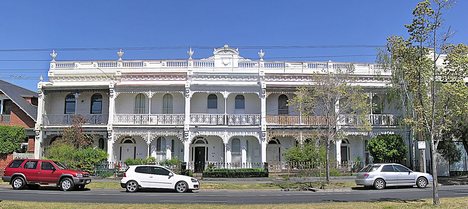
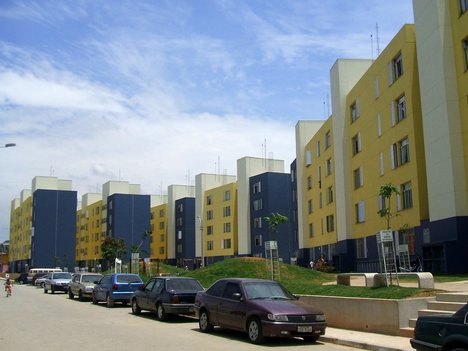
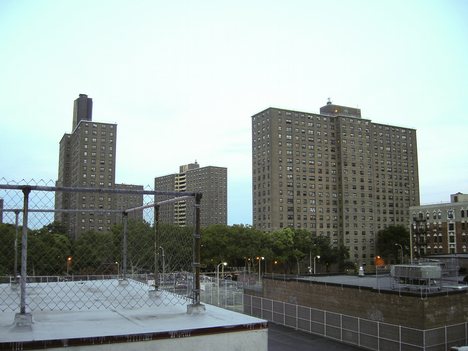
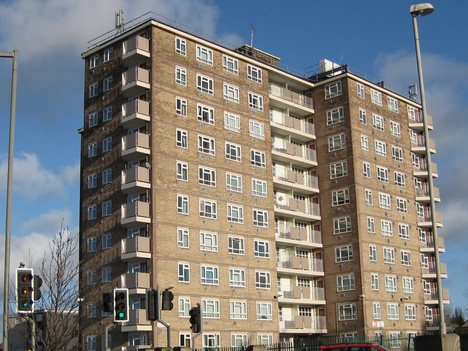
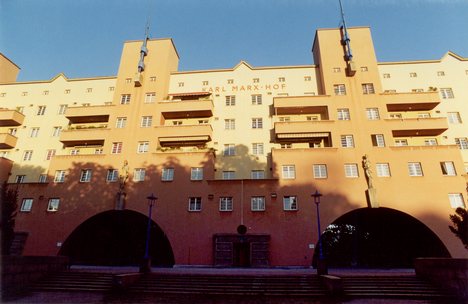





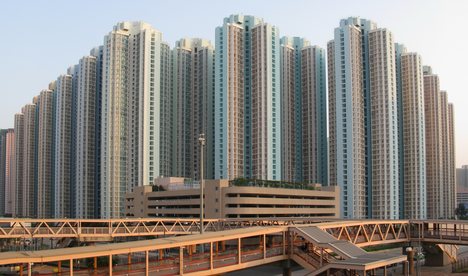
![Lakeside Garden (traditional Chinese: 翠塘花園) is a public housing estate[3] and Flat-for-Sale Scheme estate on the reclaimed land. Lakeside Garden (traditional Chinese: 翠塘花園) is a public housing estate[3] and Flat-for-Sale Scheme estate on the reclaimed land.](http://web.archive.org./web/20110302173424im_/http://cdn.wn.com/pd/eb/29/00144ebe0fe143af694b5105ea4d_grande.jpg)
![[edit] Long Bin Interim Housing [edit] Long Bin Interim Housing](http://web.archive.org./web/20110302173424im_/http://cdn.wn.com/pd/79/27/4a1d3e3406d28fbfb8ffa83401dc_grande.jpg)


